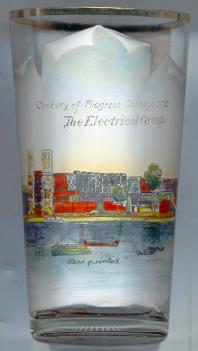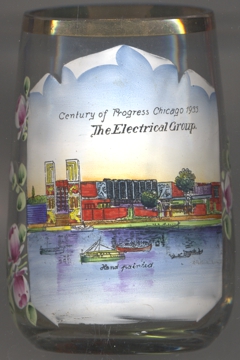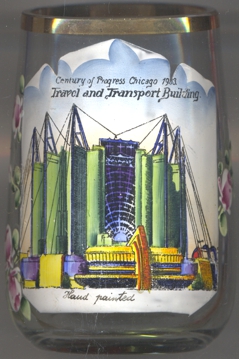

|
| UNITED STATES OF AMERICA | |
| ILLINOIS | |
| Cook County |
Chicago is situated at an elevation of 583 ft (117 m) at the southwestern shore of Lake Michigan. As of the census of 2000, Chicago is the third-largest city in population (about 2.9 million) in the United States and the largest inland city in the country. The greater metropolitan area, also known as Chicagoland, encompasses more than 9 million people.
During the mid 1700s, the Chicago area was inhabited primarily by Potawatomis, who took the place of the Miami and Sauk and Fox who had controlled the area previously. The name Chicago originates from "Checagou" or "Checaguar" which in the Potawatomi language means 'wild onions' or 'skunk'. The area was so named because of the smell of rotting marshland wild leeks (ramps) that used to cover it.
The first non-native settler in Chicago was Jean Baptiste Pointe du Sable, a Haitian of African descent, who settled on the Chicago River in the 1770s and married a local Potawatomi woman. In 1795, following the War of the Wabash Confederacy, the area of Chicago was ceded by the Native Americans in the Treaty of Greenville to the United States for a military post. In 1803, Fort Dearborn was built and remained in use until 1837, except between 1812 and 1816 when it was destroyed in the Fort Dearborn Massacre during the War of 1812. On August 12, 1833, the Town of Chicago was incorporated with a population of 350. The first boundaries of the new town included an area of about three-eighths of a square mile (1 km²).
Within seven years the primarily French and Native American town had a population of over 4,000. Chicago was granted a city charter by Illinois on March 4, 1837. The opening of the Illinois and Michigan Canal in 1848 allowed shipping from the Great Lakes through Chicago to the Mississippi River and so to the Gulf of Mexico. The first rail line to Chicago, the Galena & Chicago Union Railroad, was completed the same year. By 1857 Chicago was the largest city in what was then known as the Northwest. In a period of 20 years, Chicago's population grew from 4,000 to over 90,000 people. In 1871, most of the city burned in the Great Chicago Fire. The damage was immense: 300 people died, 18,000 buildings were destroyed and nearly 100,000 of the city's 300,000 residents were left homeless. In the following years, Chicago architecture would become influential throughout the world. The world's first skyscraper, the Home Insurance Building, was constructed in 1885 using novel steel-skeleton construction.
During the early 20th century, the city built tunnels below Lake Michigan to new water inlet stations ("cribs") 2 miles (3 km) offshore. However, spring rains and the Chicago River still carried pollution to the inlet stations. In 1900 the water-supply problem was solved by an engineering project that switched the flow of the Chicago river away from the lake and into the new Chicago Sanitary and Ship Canal. In 1955, Richard J. Daley was elected mayor. Under Daley's rule, which lasted for 21 years until his death in 1976, Chicago's Loop had a a building boom that continues to this day. O'Hare International Airport, many skyscrapers including the Sears Tower, and most of Chicago's expressway system were built or expanded during this period. Two of the world's tallest buildings, the John Hancock Center (1,127 ft, 344 m, completed in 1969) and the Sears Tower (1,450 ft, 442 m, completed in 1973), are located in downtown Chicago. In 2005, construction for the Trump Tower Chicago began, which, when completed will be the second-tallest building (1,362 ft, 415 m) in Chicago and the second-tallest building in the United States—unless the Freedom Tower in New York city (planned for 1,776 ft, 541 m) will be completed by then.
The 1933/34 World's Fair, which was held in Chicago was entitled “A Century of Progress”.
The Exhibition was opened on May 27, 1933, by Postmaster General James A. Farley. When the fair closed October 31,
1934, thirty-nine million visitors had paid to walk through fairgrounds that stretched along the lakeshore from 12th to 39th
streets. In the midst of the Great Depression, this fair returned a profit to its organizers and helped to counter an image
of Chicago as a gangster-ridden town. Fair organizers raised money from a $10 million bond issue, exhibit rental fees,
concession contracts, tickets, and fair memberships, but not through municipal, state, or federal subsidies. At the
conclusion of the fair and according to the contract with the South Park Commission, the predecessor to the Chicago Park
District, all evidence of the exposition was removed and the space returned to parkland. The Chicago Park District retained
a few structures on the site, but these have since been demolished. Balbo's Column, a gift from the Italian government in
1933, is the last relic on the original fair site.


 The Electrical
The Electrical

 The Travel
The Travel
Both glasses no. 3057 and no. 3058 [left] are labeled on the bottom “MADE IN CZECHOSLOVAKIA”.
[Texts adapted from http://en.wikipedia.org/wiki/Chicago, http://century.lib.uchicago.edu/about.html;
http://hometown.aol.com/chicfair/33fair.html, https://en.wikipedia.org/wiki/Century_of_Progress,
http://www.encyclopedia.chicagohistory.org/pages/3340.html]
![[scale]](lineal.jpg)